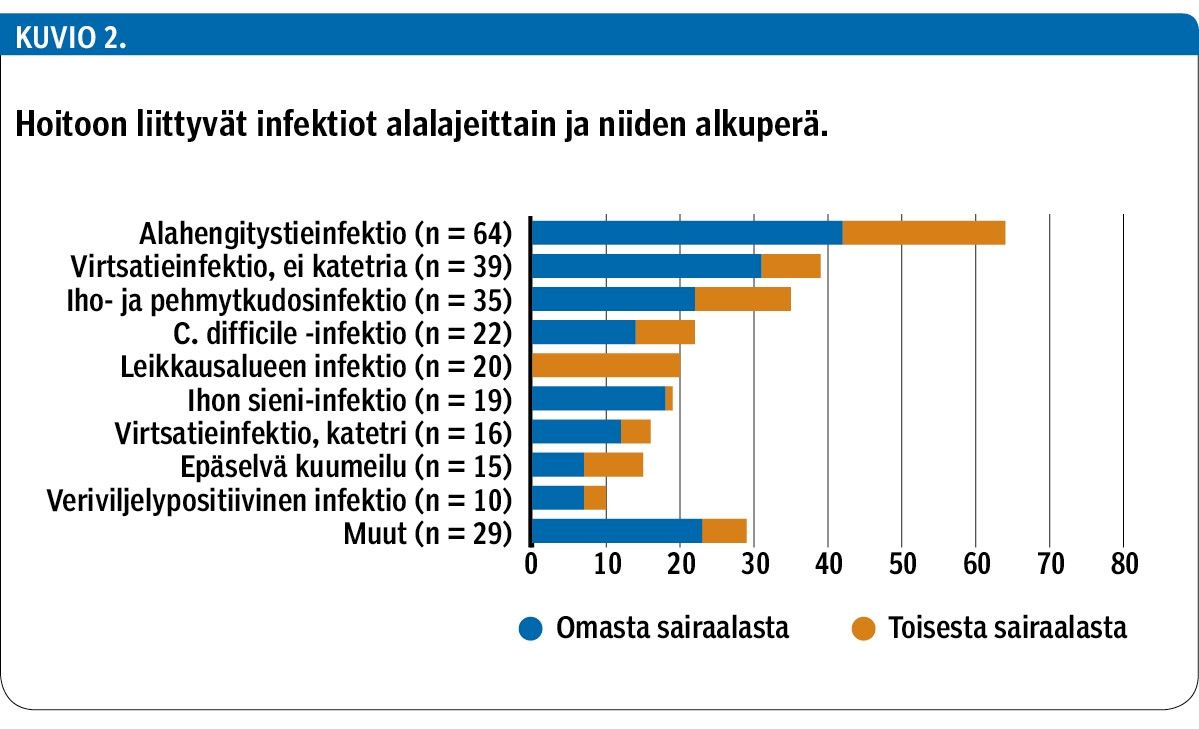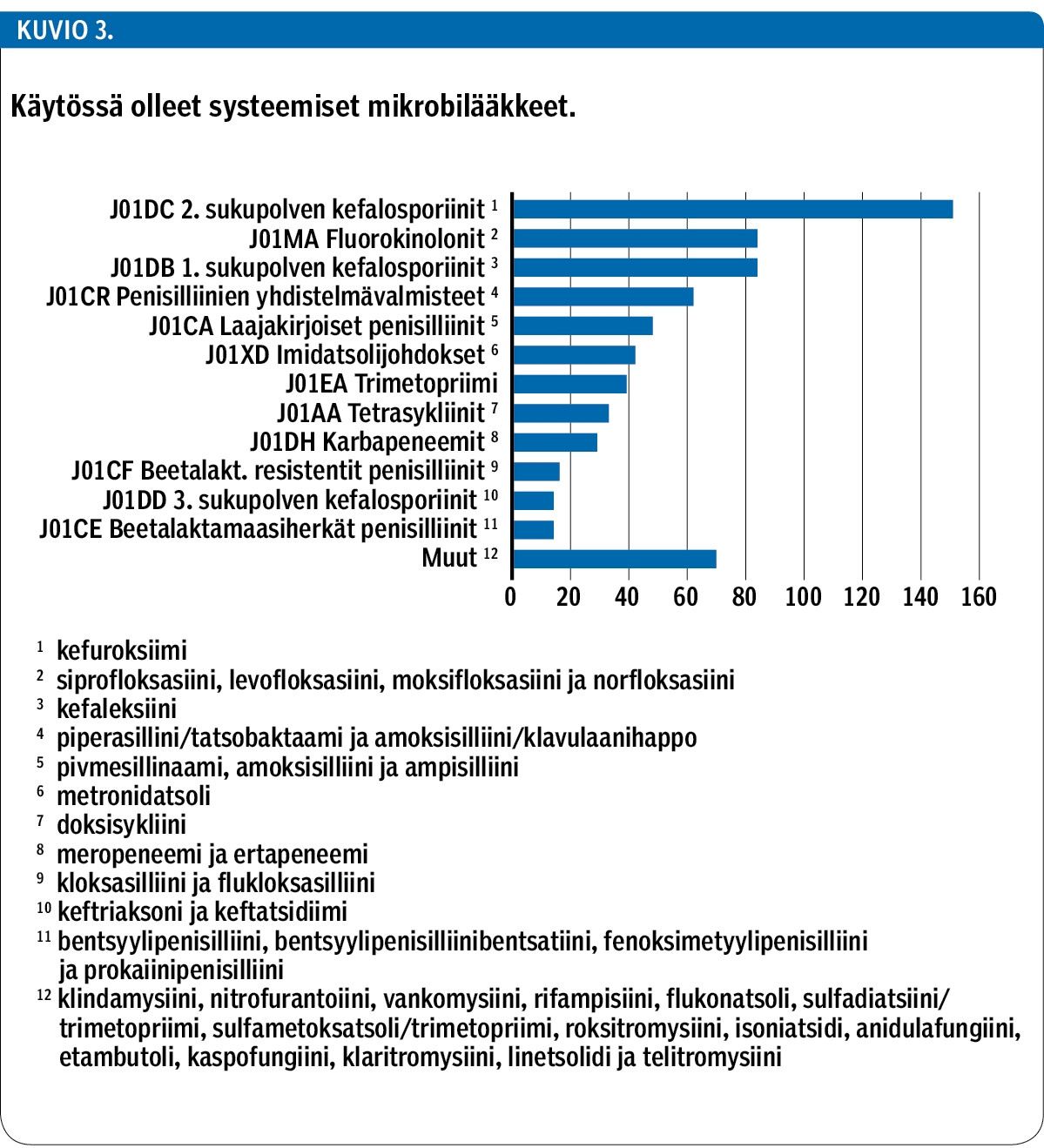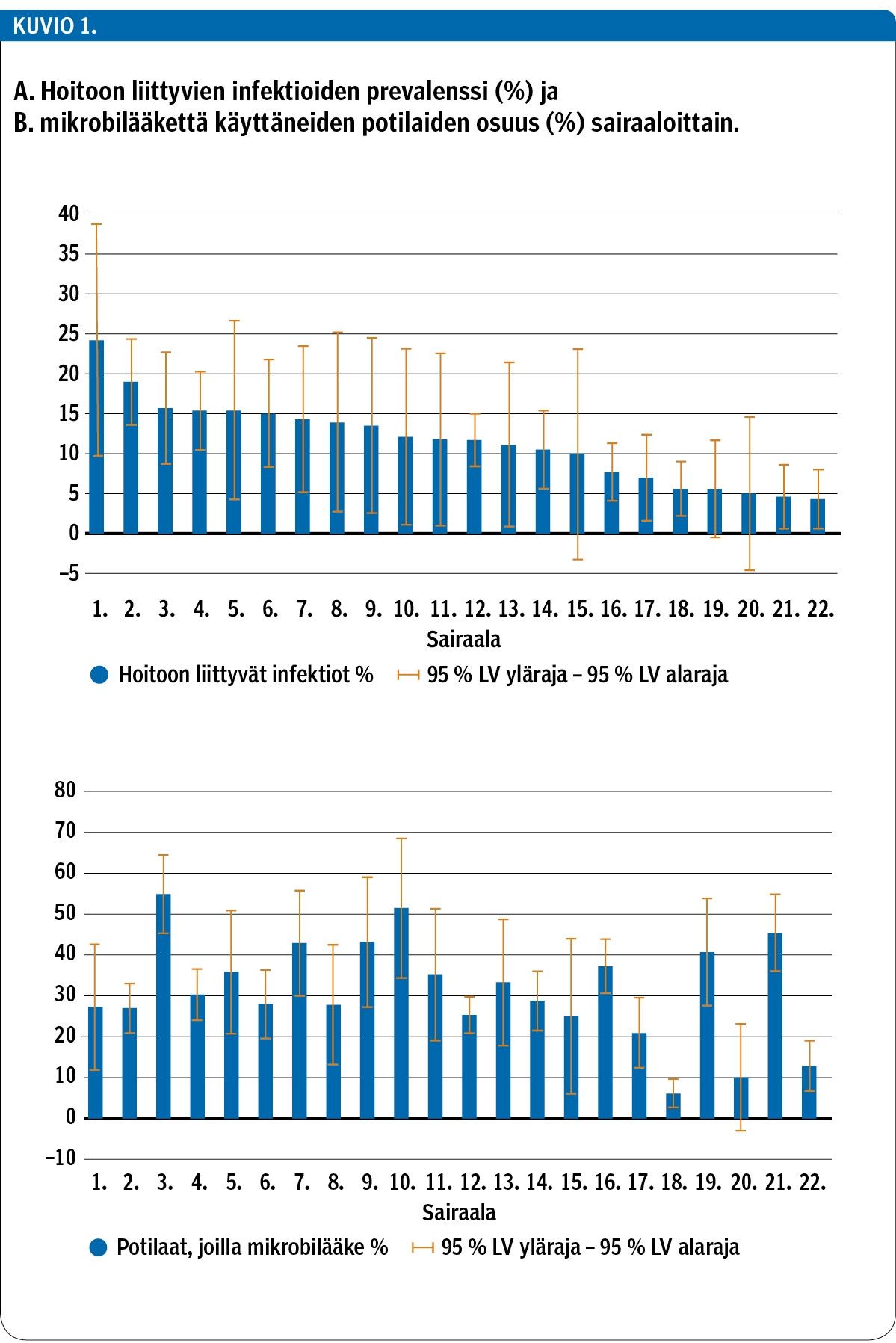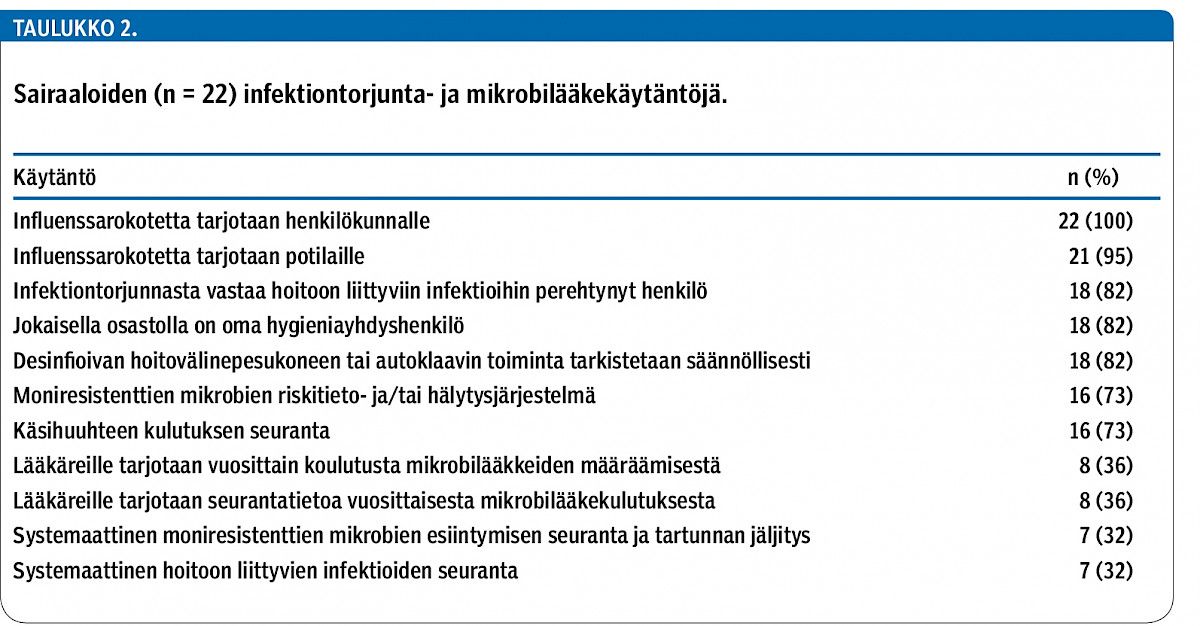Prevalence of health-care associated infections in primary care hospitals in the Hospital District of Helsinki and Uusimaa in 2015

Background
There is no routine surveillance of healthcare-associated infections (HAIs) in primary care hospitals in the Helsinki and Uusimaa hospital district (population of 1.6 million). The objectives of this survey were to establish the burden of HAIs and to introduce a surveillance method. Data on patient characteristics, prevalence of catheters, and antimicrobials were also collected.
Methods
Nineteen municipalities were invited to participate in this voluntary point prevalence survey (PPS) in September 2015. The infection control nurses of the hospitals were instructed to collect the data from the patient charts. The questionnaire (a modification of the HALT-2 protocol by ECDC), data analysis and feedback were provided by our study team.
Results
Altogether 22 hospitals from 16 municipalities participated and collected data on 2218 inpatients. Of these, 48% were receiving acute care, 32% rehabilitation, 18% long-term and 2% terminal care. On the study day, 11% (range by hospital, 4-24%) of the patients had at least one HAI, one-third originating from other hospitals. Of all patients 14% had a urinary catheter and 18% a vascular catheter. The most common indications for urinary catheters were urinary retention, “unknown”, urinary volume measurement, incontinence and skin problems. Of all patients 29% were receiving at least one antimicrobial. The most commonly used antimicrobials were cefuroxime, cefalexin and fluoroquinolones. The most common indications for cefuroxime were respiratory and urinary tract infections. Cefalexin was used mainly for skin and urinary tract infections, and fluoroquinolones for urinary and respiratory tract infections. No MRSA infections were detected.
Conclusions
HAI surveillance and prevention require improvement in primary care hospitals. A PPS is an appropriate tool. There were marked differences in the prevalence of HAIs in different hospitals. However, no final conclusions on the reasons for these differences can be made because the numbers of patients were small in some hospitals. The prevalence of antimicrobial use was high, especially of fluoroquinolones. The prevalence of original prescriptions of fluoroquinolones in the primary care hospitals was surprisingly high (80%). Fluoroquinolones should be considered rather as step-down antimicrobials in severe infections, not as primary antimicrobials in primary care. The prevalence of carbapenems was lower than expected. Resistant microbes were rare, so far.


















